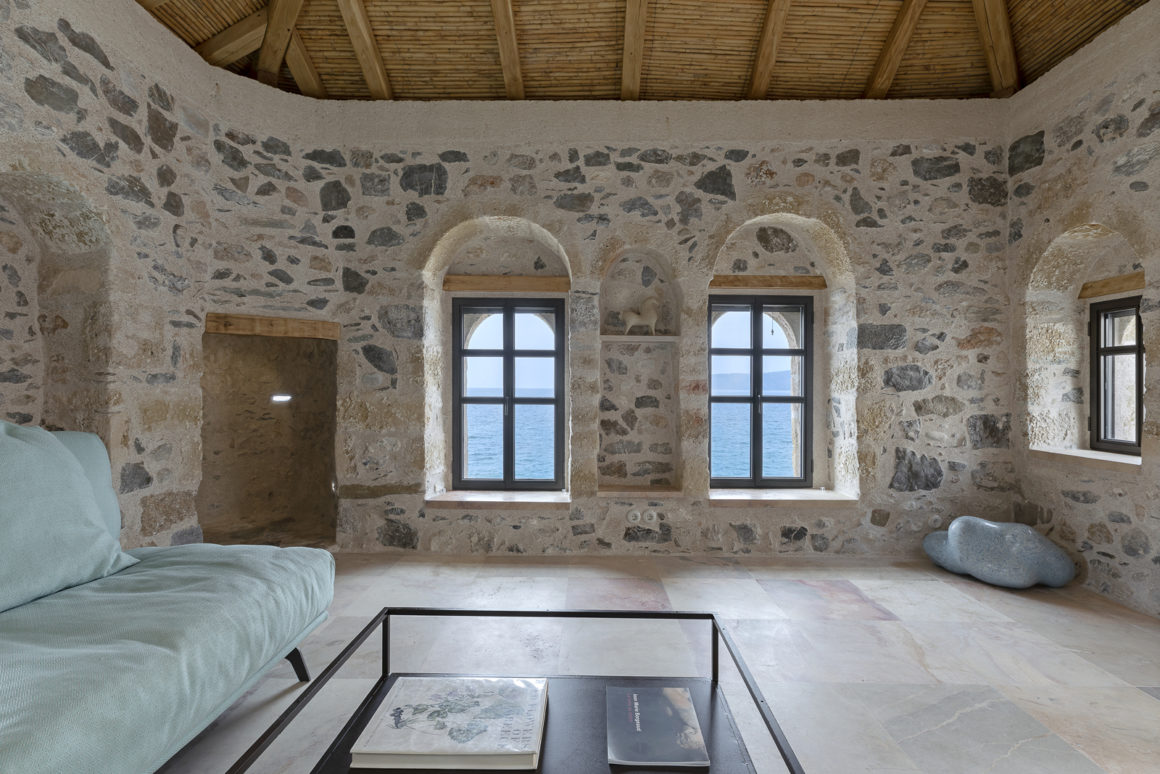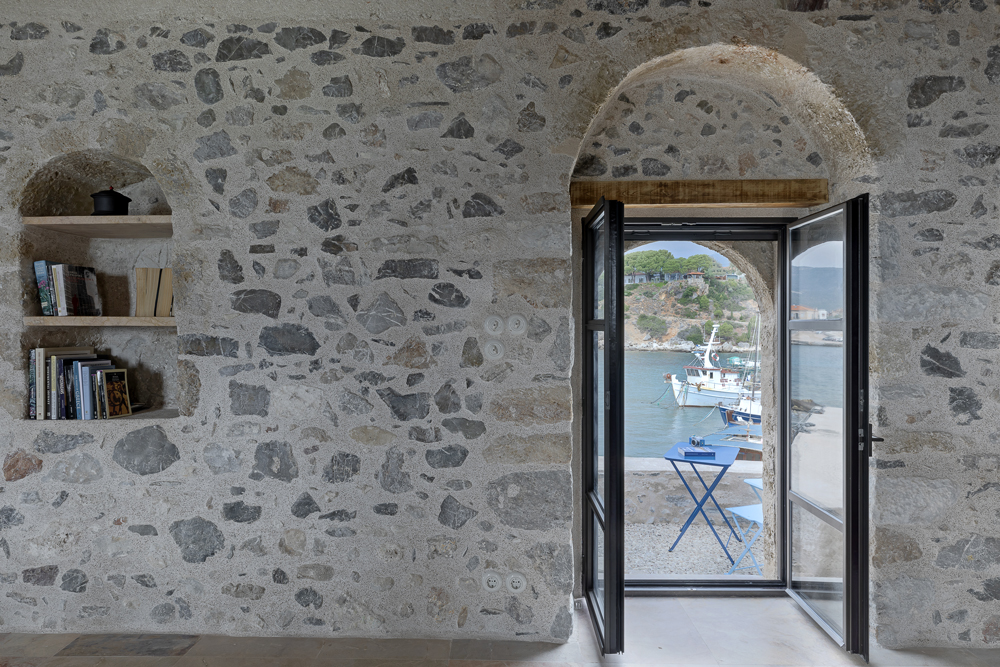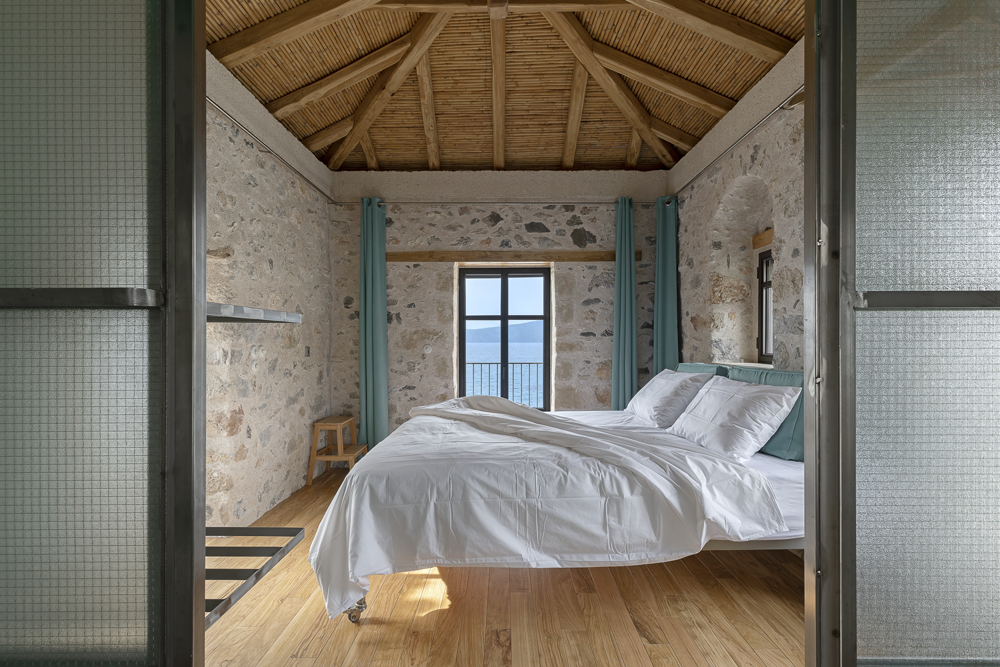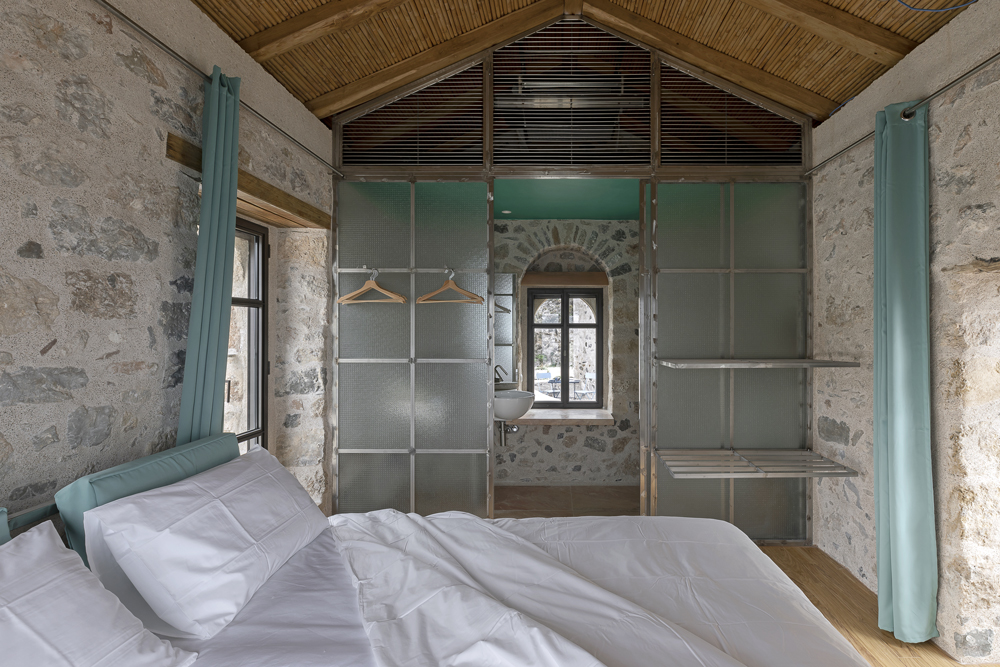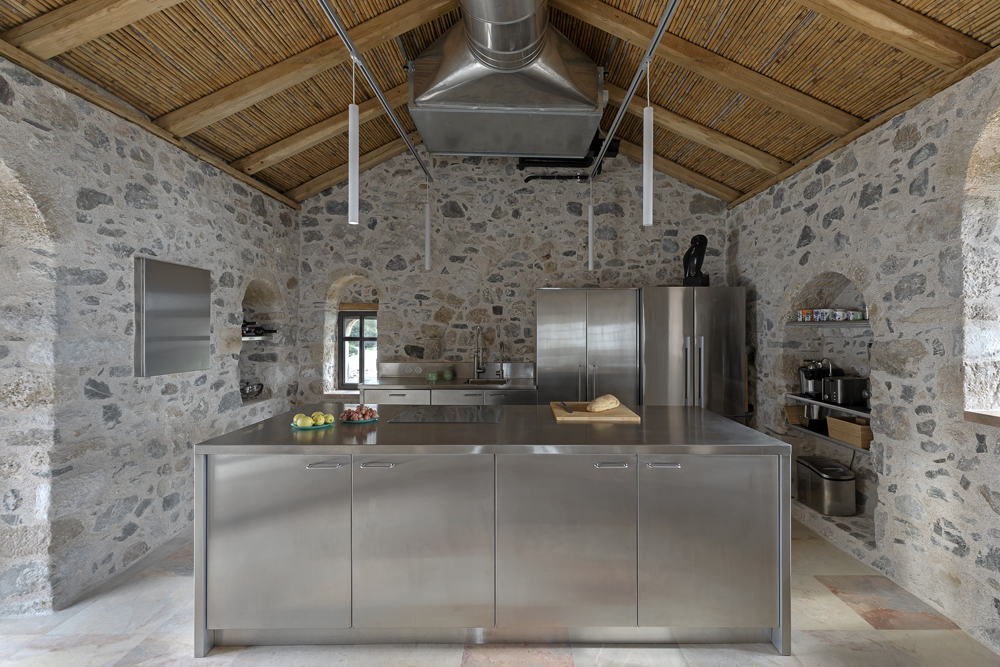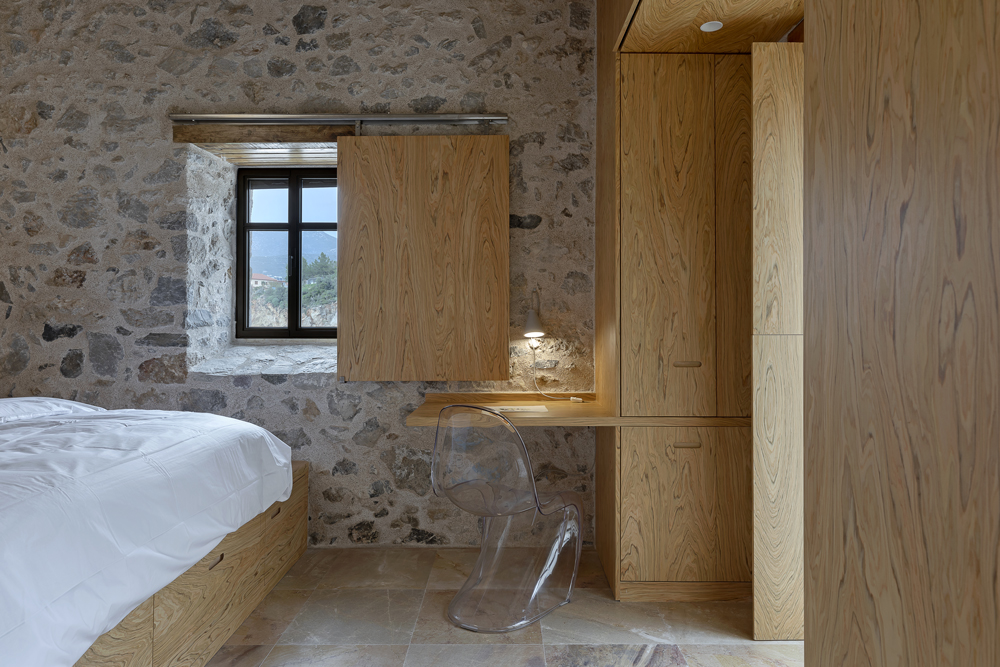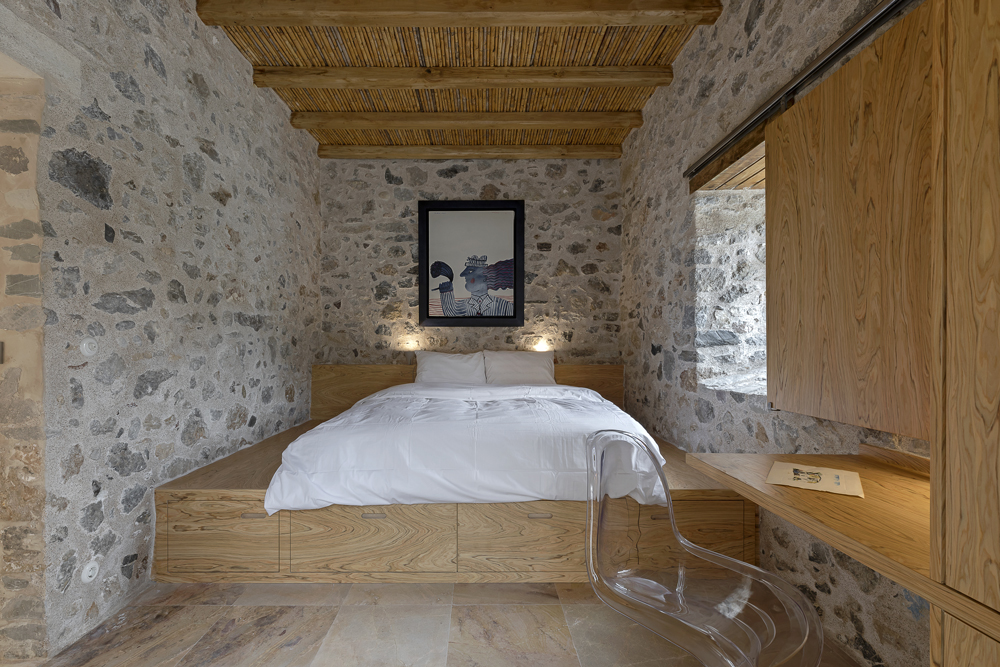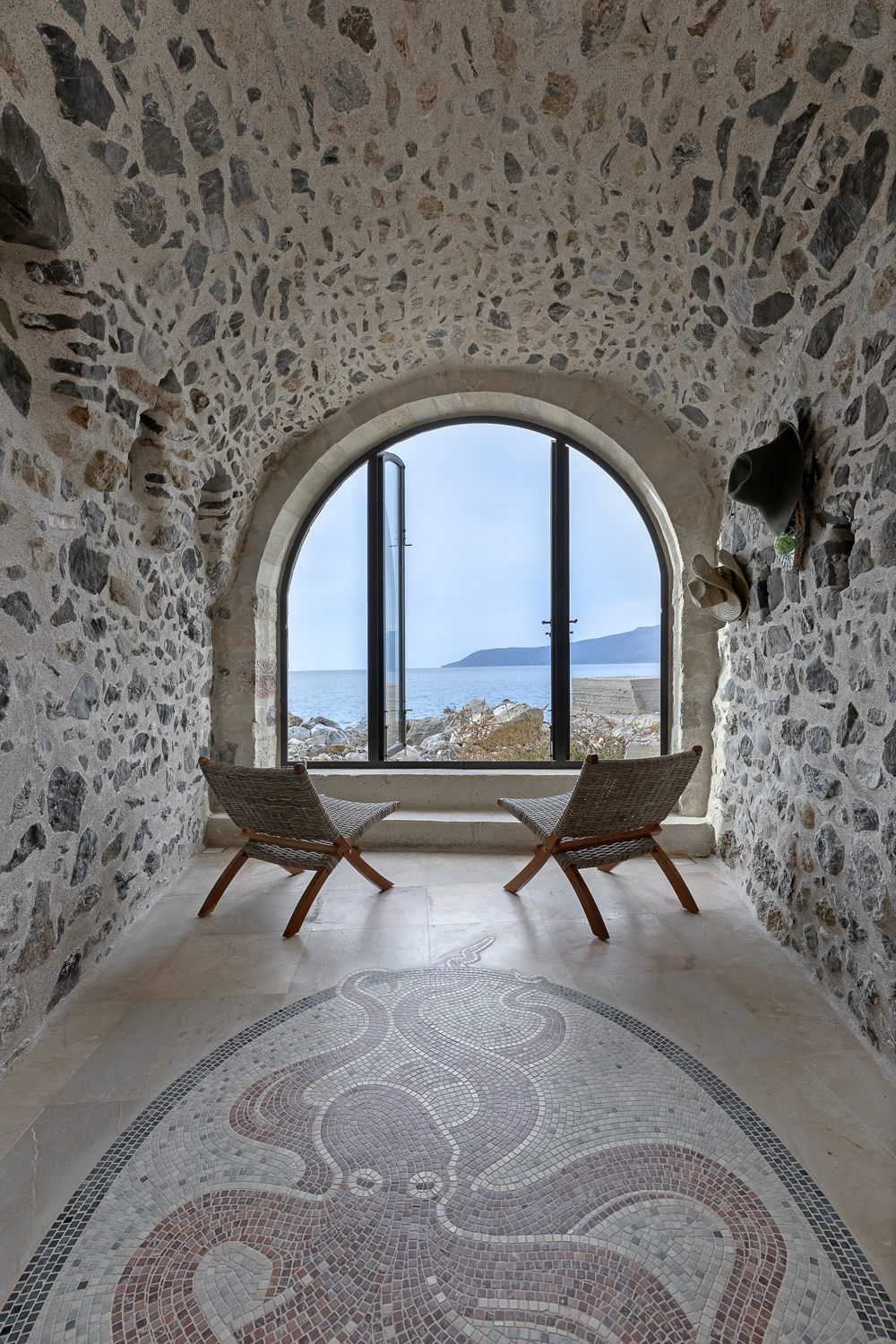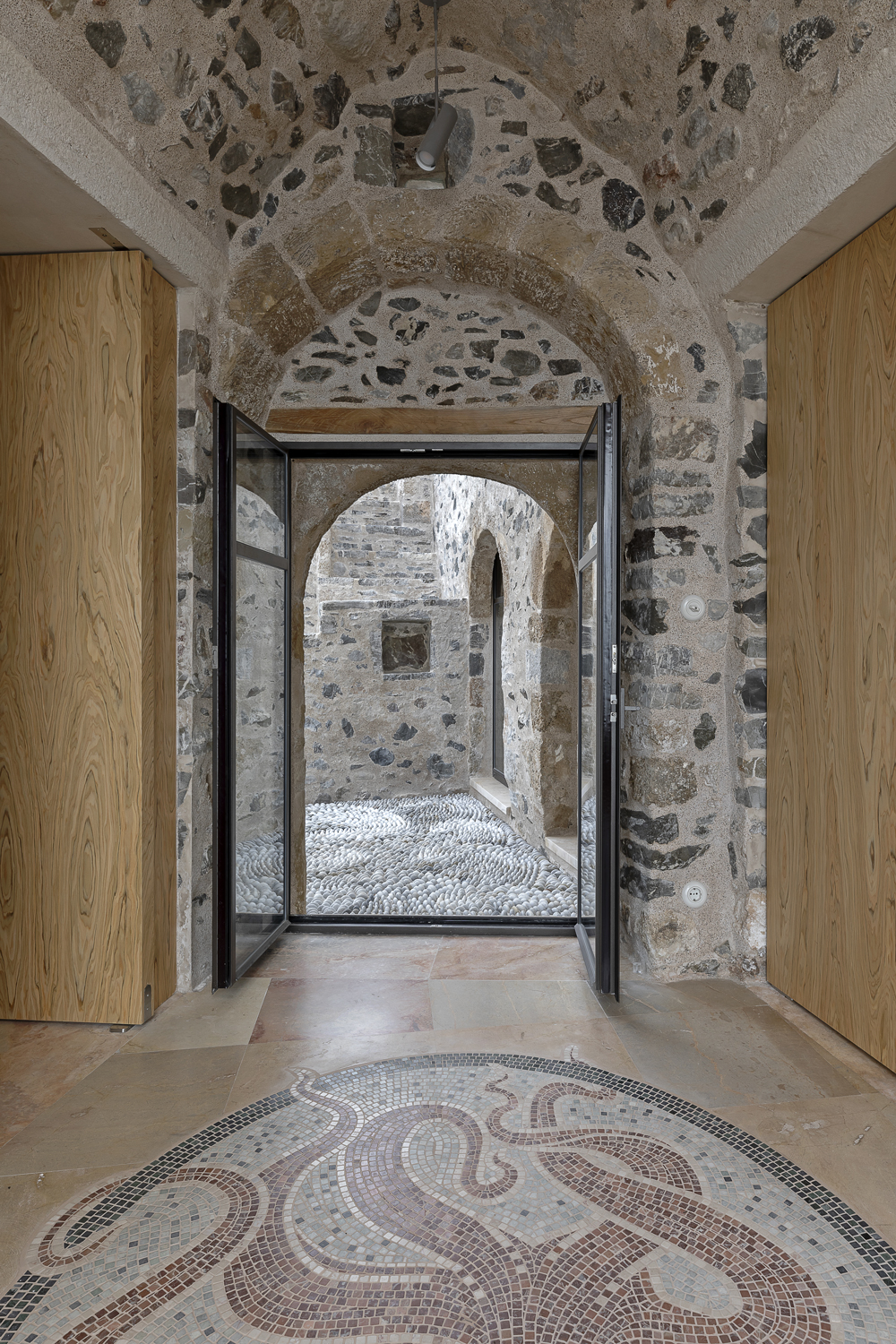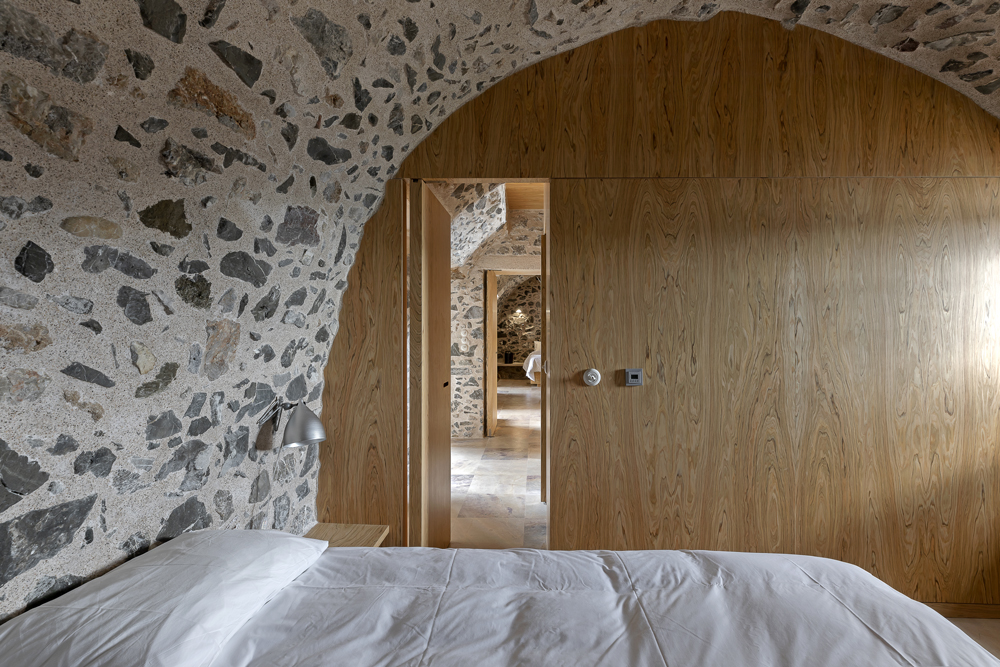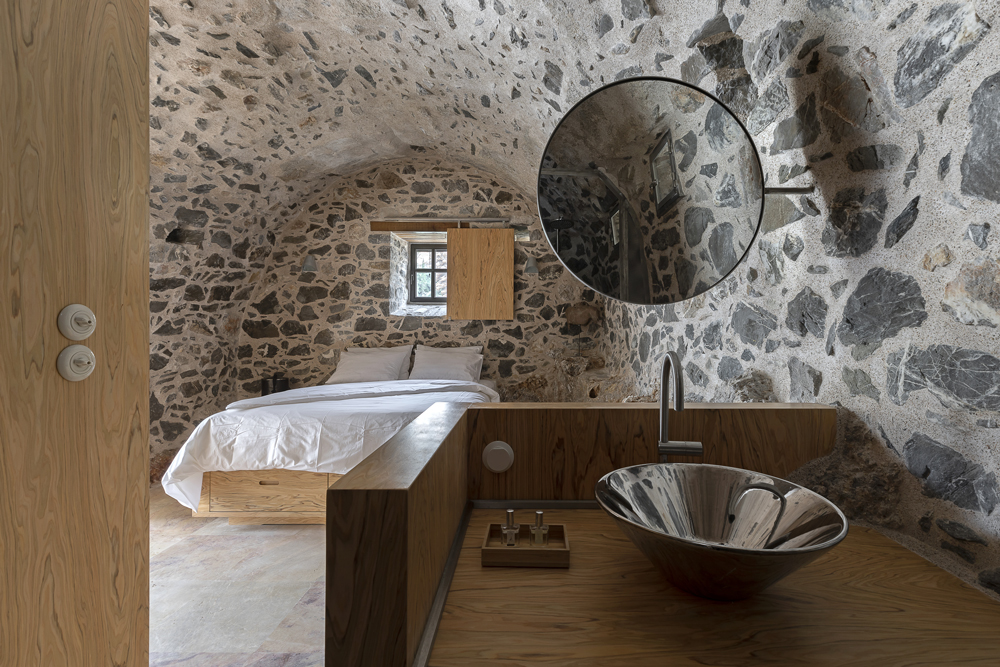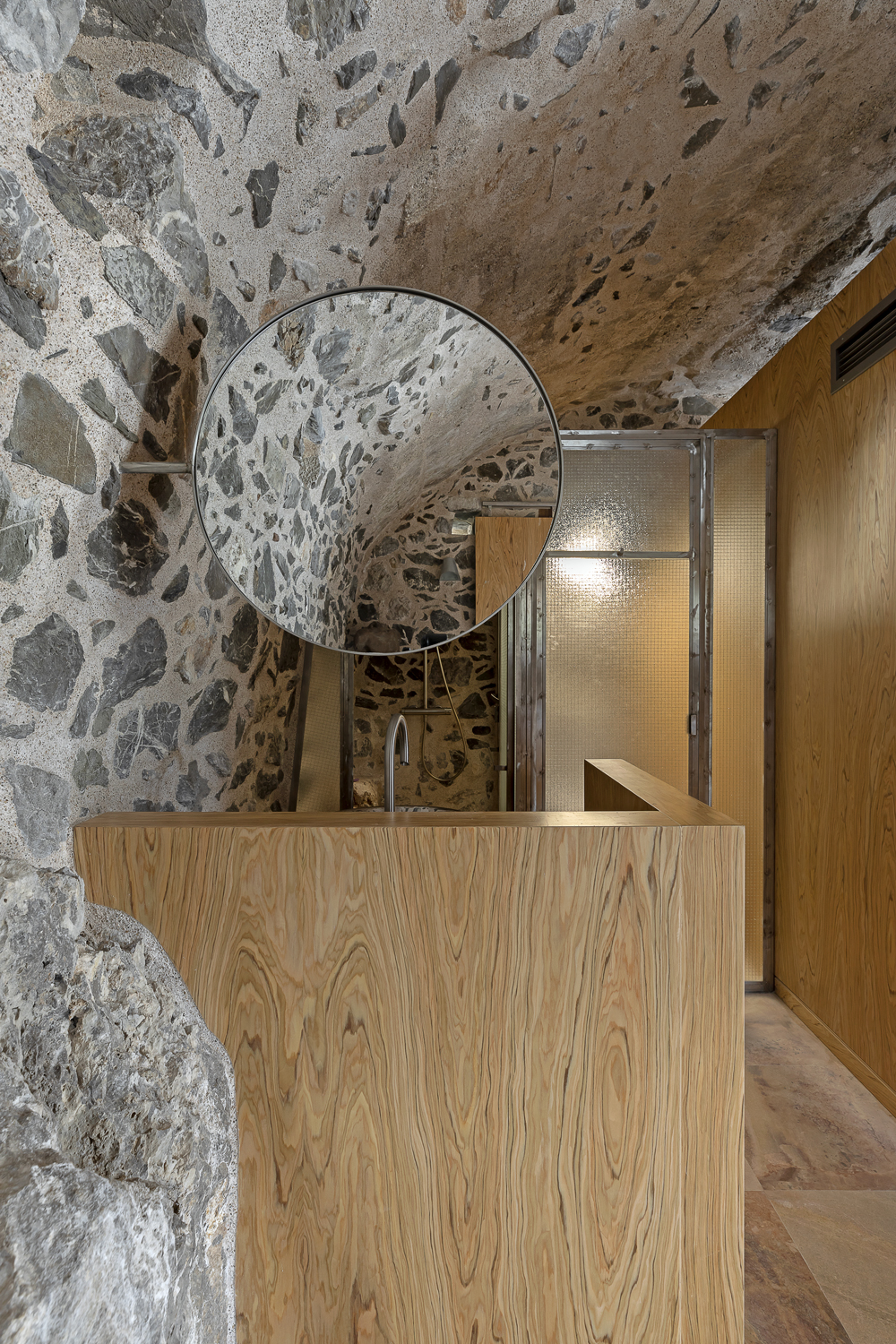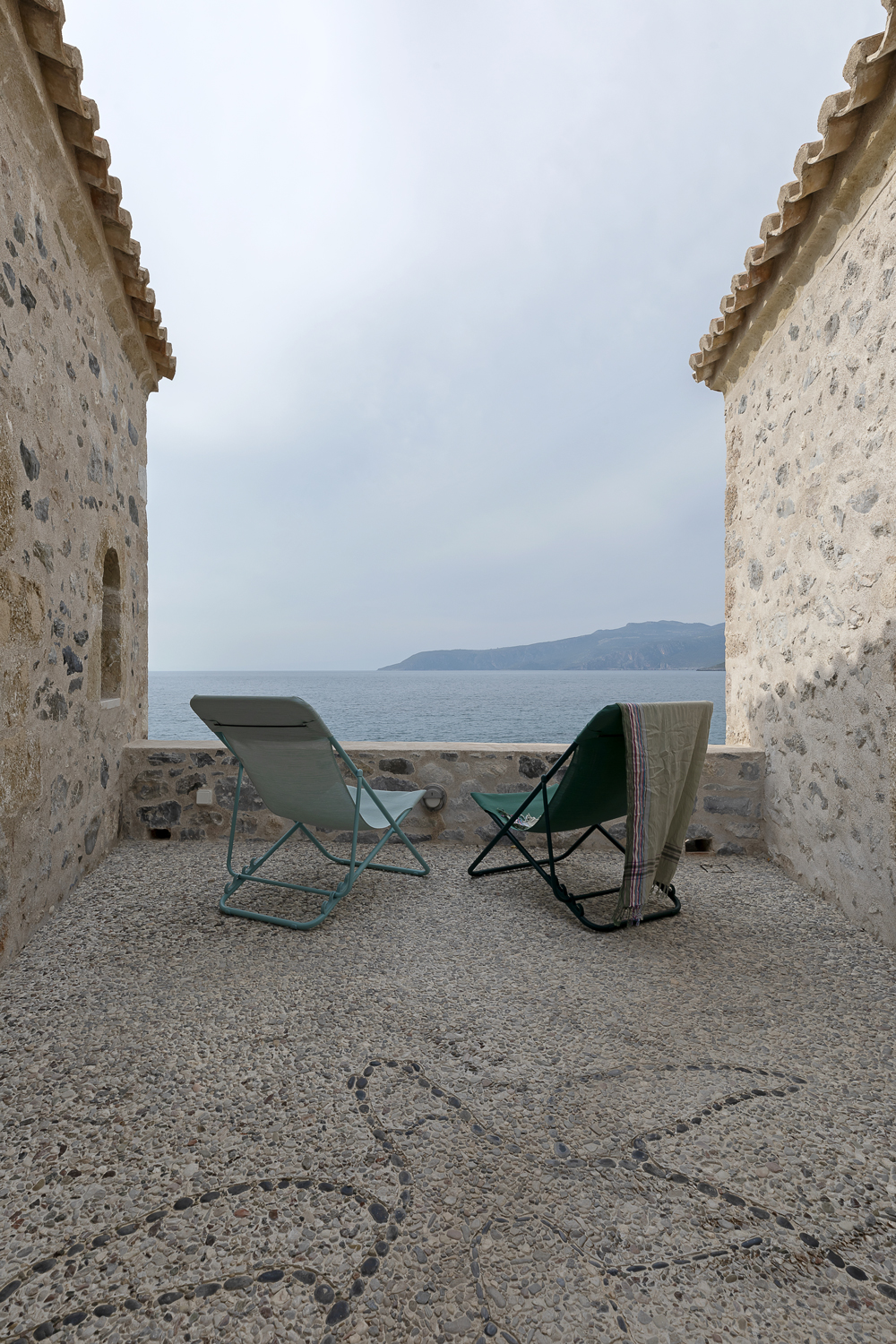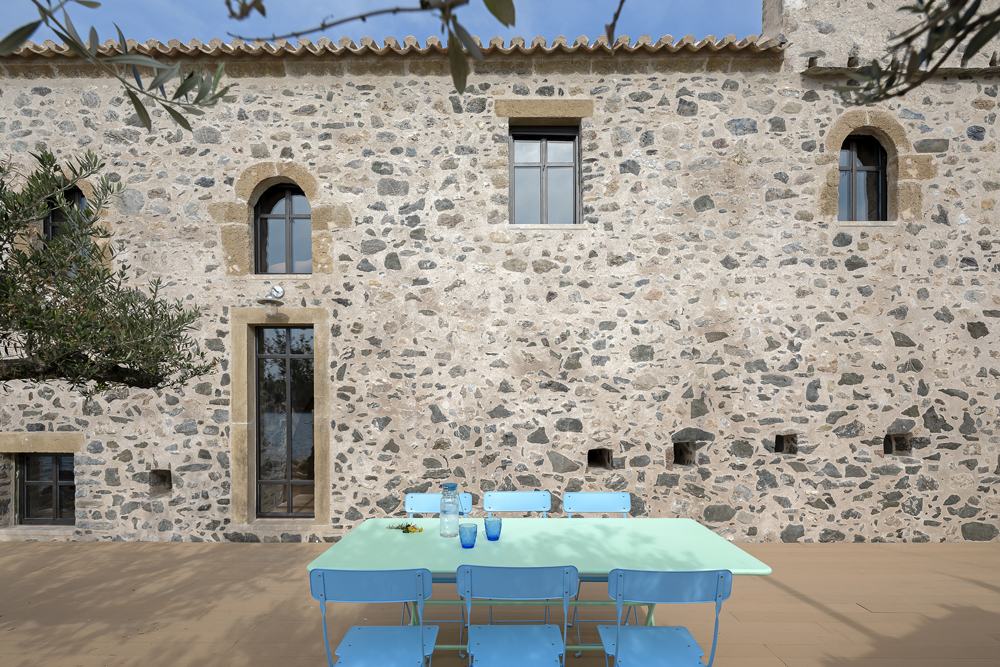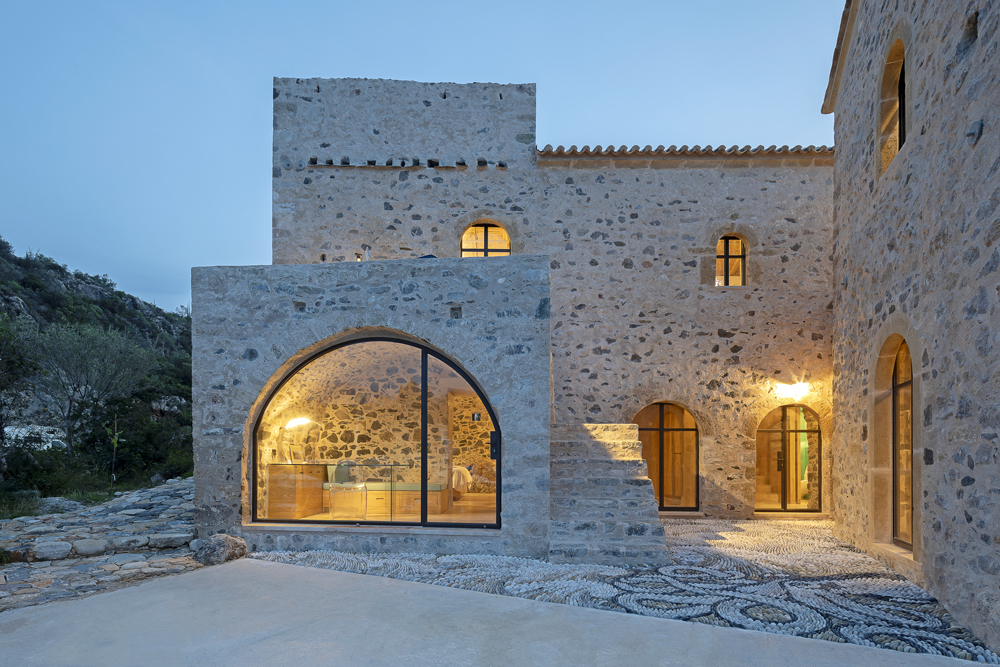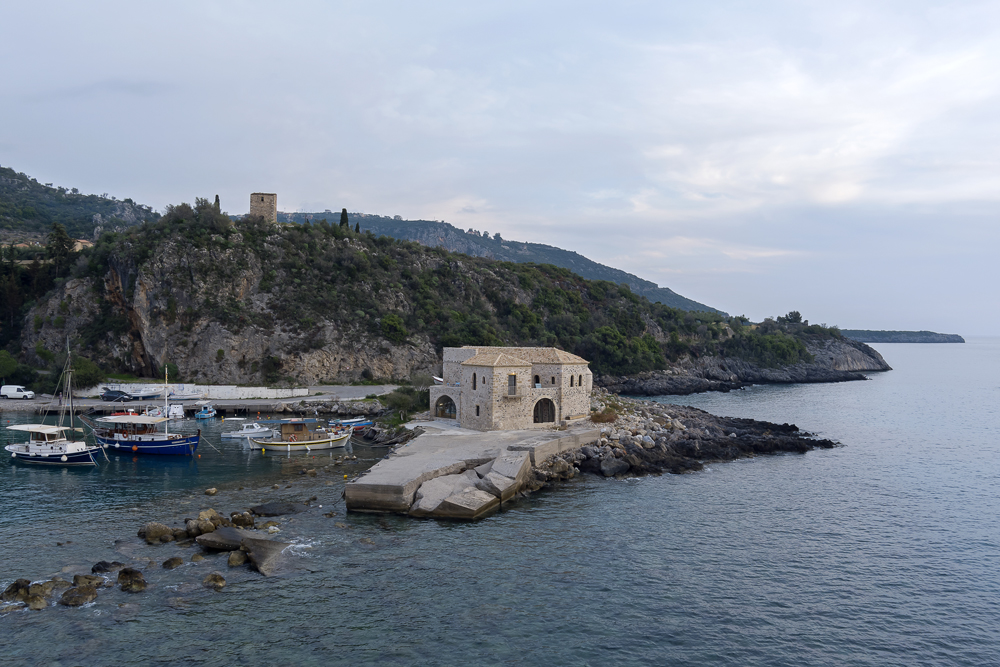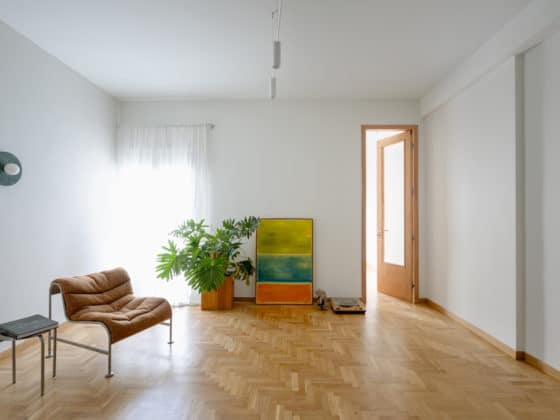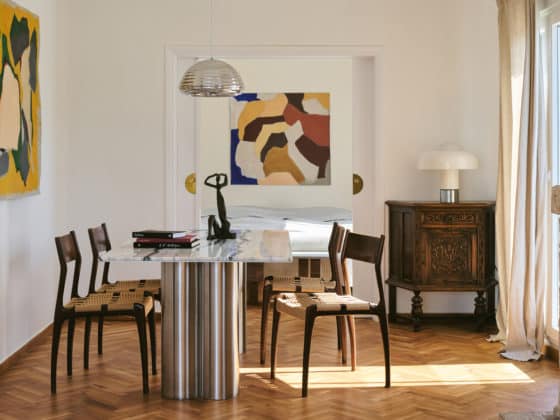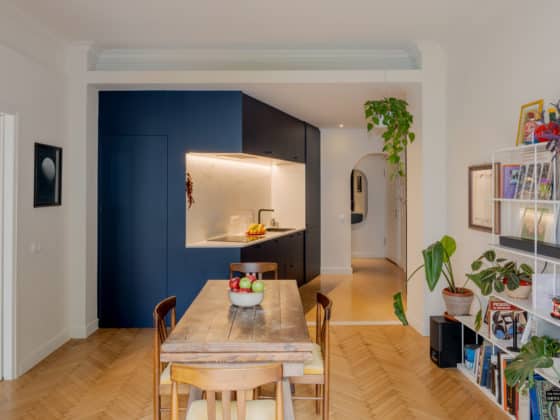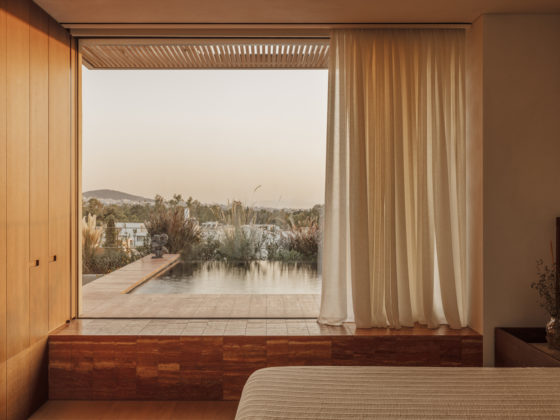ETSI Architects have transformed a listed historical building into a contemporary residence through a series of changes, additions, and upgrades. “Teloneio”, as one of the area’s landmarks was brought back to life, respecting its place in the local landscape, history, and community. Its location in the port of Kardamyli since the 18th century makes it a focal point for the area. After briefly being resurrected as a motel in the 1960s, it had been partially buried in concrete and fallen into disrepair, giving the architects the perfect opportunity to reimagine it as a home while preserving it for the future.
Creating an identity where the duality between the past and the present coexist in the same space, the architects revealed the stunning 18th-century stonework, turning short squat buildings into tall slender ones by careful excavation from the surrounding concrete. Keeping the original fortified Mani architecture intact, they restored the shell and added keyhole windows on the lower floors allowing light and air into the space. Connecting the rooms within each building, the design team added a staircase with a bold cut of the main vault, created access to the outdoors on the south side, and linked the two buildings together.
“We see ourselves as ‘progressive regressionists’ and the Teloneio as an example of what can be achieved when experts collaborate in a regenerative building. We used local materials including marble floors from the Itilo quarry, olive wood furniture and veneers, and local pebbles for the entrance mosaic, employing traditional techniques for the pointing and repairs. We achieved what we set out for: a state-of-the-art historical restoration and an elegant second home that maximizes the sea views, with a flow between internal and external spaces. Four bedrooms, an office and three bathrooms across two buildings, and an open plan kitchen/dining/living area for a modern family to enjoy. The project transformed the local community, overcoming reservations about restoring a beloved landmark and becoming a visitor attraction. It went above and beyond what we and our clients hoped for.” — ETSI Architects
